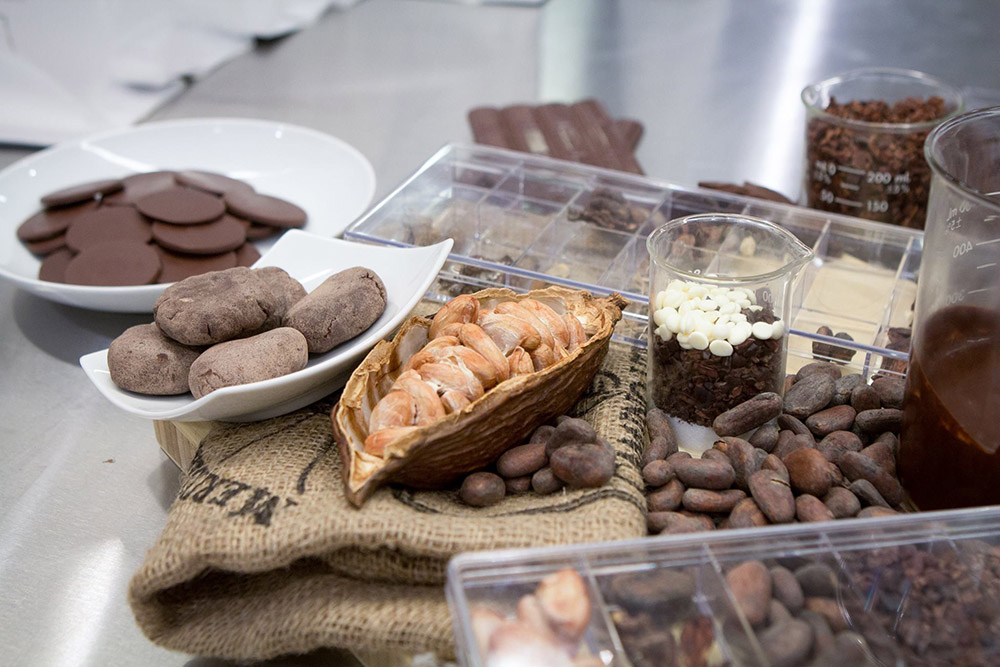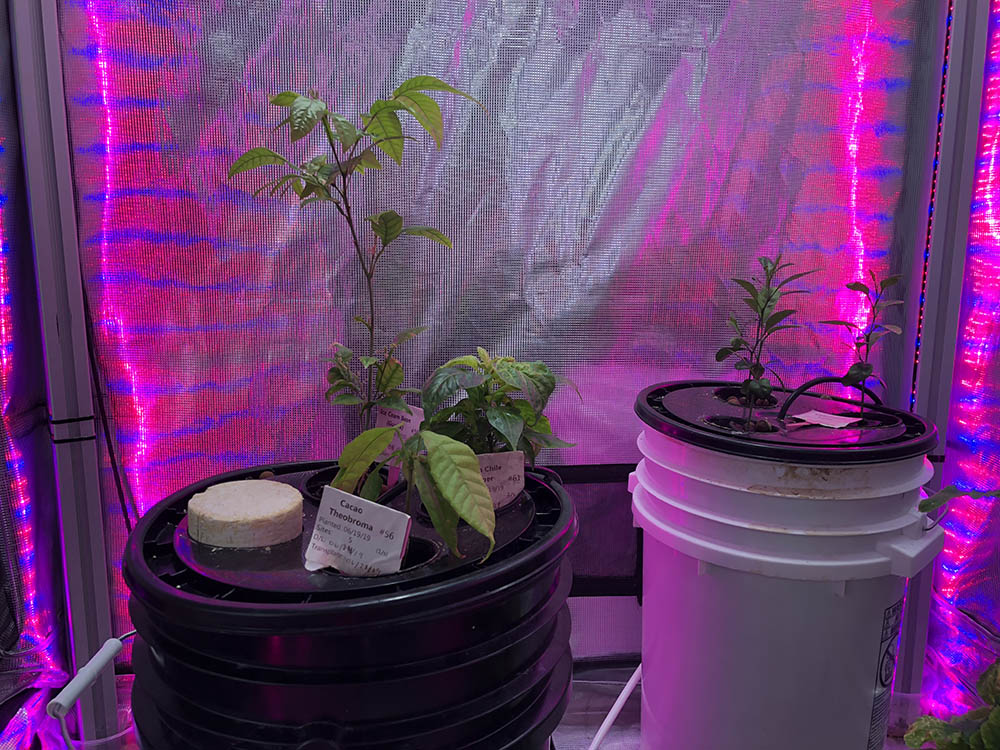It was Swedish botanist Carl Linnaeus, inventor of the binomial nomenclature system of naming plants and animals, who christened the tropical tree Theobroma cacao in 1753. By that time, rich beverages made from its seeds, or beans, had gained a foothold throughout Europe and North America; its alluring flavors inspired the tag Theobroma, which adapted from Greek meant “food of the gods.”
The use of cacao at the time was still limited to drinks, but within one hundred years it would evolve into the sweet confection we know today. The ICE Chocolate Lab strives to explore not just the bean-to-bar manufacturing process and its applications but also its historical and cultural significance – and we recently welcomed some new cacao beans to further educate and inspire a deeper connection to chocolate’s source.
Of course, human attraction to the cacao — or “cocoa” — tree spans a few thousand years, back to its wild origin in the upper Amazon basin of South America and its later cultivation in Mesoamerica by the Olmec, Maya and Aztec cultures. Initially after the sweet, sticky pulp within its fruit (pods, we call them), these early aficionados began to understand and harness the potential of the cocoa bean itself. The beverages they produced certainly wouldn’t resemble “hot chocolate” as we think of it today – we assume they were bitter and coarse, but richly flavored with an array of spices, nuts, flowers and more.
Cocoa trees thrive within a narrow latitudinal band, roughly 20 degrees north and south of the equator, due to the constant, year-round heat and humidity this zone offers. As European colonial powers began to appreciate its charms, the planting of cocoa trees spread from its origin in South and Central America to the Caribbean, the East Indies and beyond. Today cocoa is grown in some 40 countries throughout the tropics, with West Africa (namely Ivory Coast and Ghana) producing the majority of the world’s supply, more than 70%. “Emerging” origins today include Vietnam and India; small amounts of cocoa are also grown within the far corners of the United States — Hawaii and Puerto Rico.
The trees take a few years to reach fruit-bearing maturity. The cocoa pods develop from flowers that blossom directly from the trunk and thick branches of the tree. They ripen over the course of five to six months (most trees are harvested twice a year, some on a continuing basis). Varying in size, shape and color among the varieties, pods grow to 4-10 inches long. The yellow, orange, red or purple fruits and their sweet white pulp encase 30-50 bitter beans, themselves dark purple or occasionally white. It is roughly the number of beans in one pod needed to produce a standard-sized bar of dark chocolate.

For educational purposes, I always keep a few whole dried cocoa pods on hand, which is usually our best way of linking the finished product back to its botanical source. Only occasionally do we see fresh pods in the Chocolate Lab at ICE, as the fruits tend not to travel well far from origin. It’s exciting nonetheless to share the experience with students and visitors, most of whom have never seen nor tasted “chocolate” in its most raw form. At origin the ripened pods are split, the beans removed to be fermented and dried before the chocolate-making process begins. Though they serve as the base for everything chocolate, these dried beans are, however, no longer viable as seeds.
Only fresh beans have the potential to grow into a tree, thus every raw pod I manage to acquire has become an opportunity to grow my own. Success, well, has always eluded me; while I’ve managed to get beans to germinate, not a single experiment in my New York City apartment ever managed to survive into tree-hood. Considering the high heat and humidity of its preferred growing zone, it makes sense that our far more temperate climate can’t sustain a plant for very long. What if, however, we did have a controlled environment to better care for a fledgling cocoa tree?

Enter Danna Matute, hydroponic farm manager at ICE. Sourcing a few precious fresh seeds shipped in from Hawaii, she managed to propagate them earlier this summer to produce a pair of now nearly foot-tall seedlings. She’s applying her expert touch in replicating their ideal growing conditions — in a small room tucked away on the third floor of a lower Manhattan office building, latitude 40°N.
They remain in a fragile stage of development, but what happens if we manage to foster our Theobroma into actual trees? They certainly wouldn’t bear fruit and not enough to properly ferment, but perhaps it presents an opportunity to pack my things, transplant the trees to a cocoa-growing region, and start a new life as a farmer. A boy can dream…
See upcoming chocolate classes with Chef Michael.




